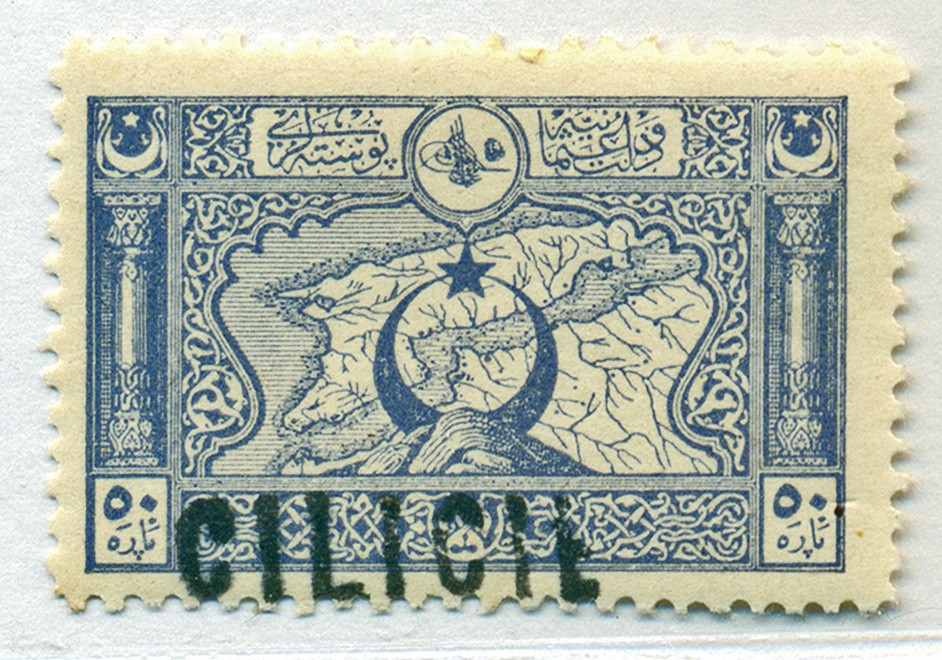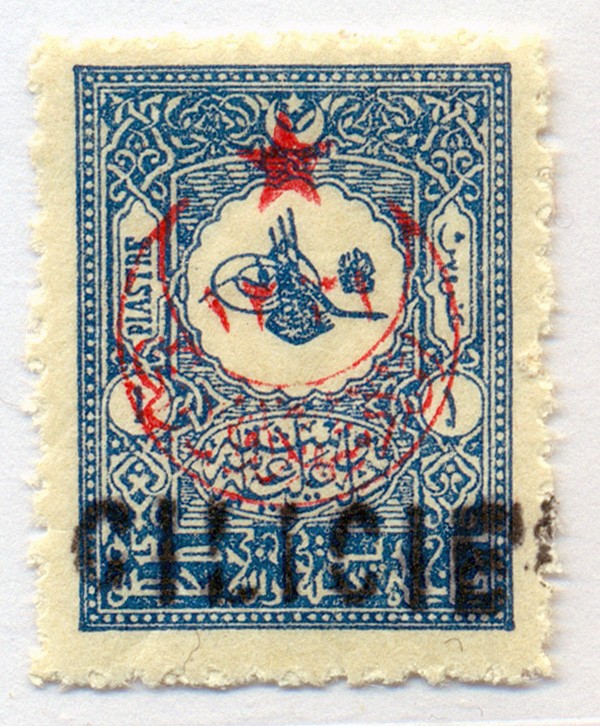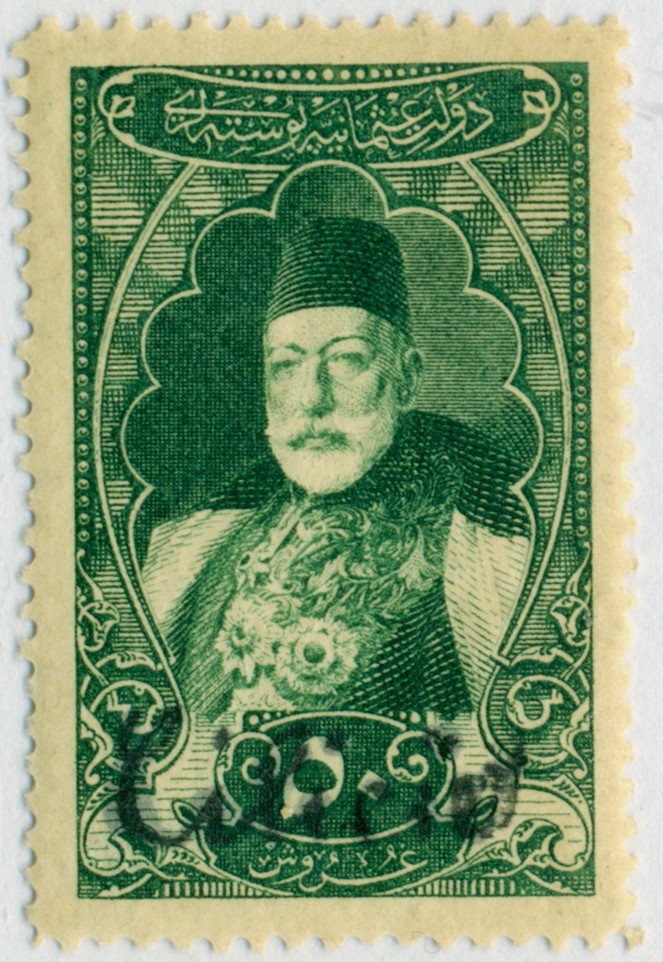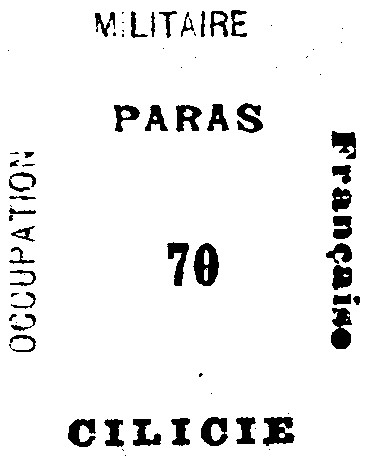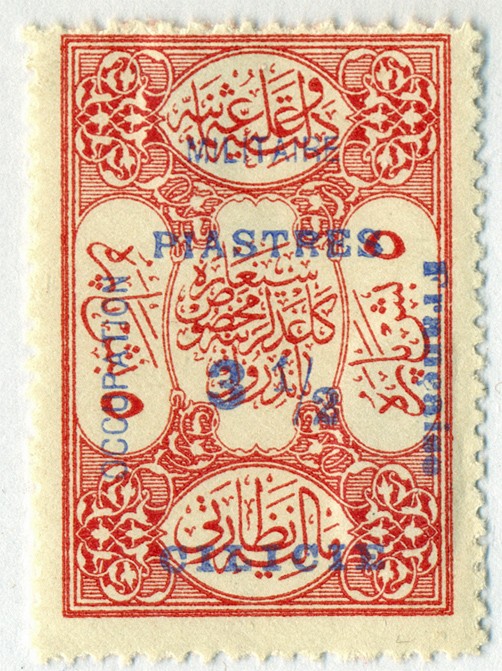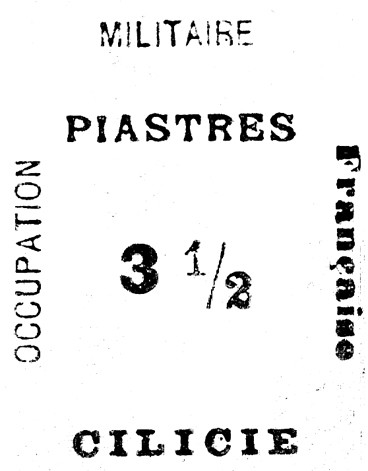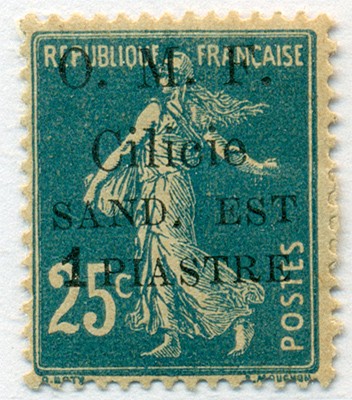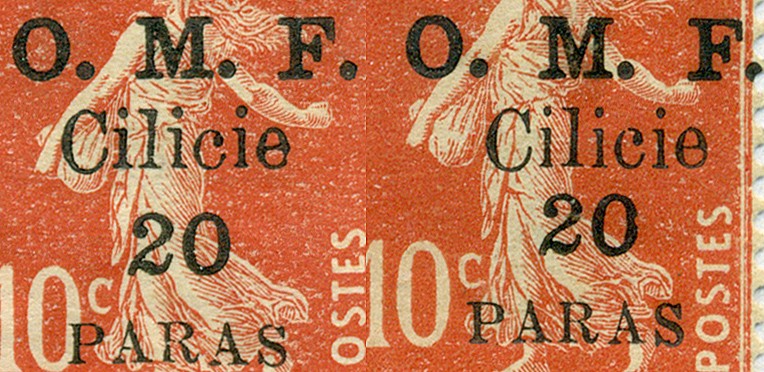Post by dcstamps on Mar 2, 2016 22:42:41 GMT -5
I would have normally put this in Asia, but since Turkey was already put in Europe, I just followed suit.
I have been organizing my Cilicia stamps and sorting out some of the complications, so I thought I would post some of my leanings. There doesn't seem to be a lot written on stamps of Cilicia on the internet, so I appreciate any expertise others might have. Eventually some of this will go up on DCStamps.
First of all, a little of the tragic history.
CILICIA
At the end of World War I, the Ottomans were divisively defeated by the Allied Expeditionary Forces in Sept, 1918 in the Battle of Arara in Palestine. This led to their unconditional surrender
on Oct 30, 1918. Allied forces immediately began to occupy strategic locations across the Empire, even within the Turkish borders.
One such region was Cilicia, a large region in southeastern Turkey. Known as Adana Vilayet during Ottoman times, the region had a large Armenian Christian population until 1915 when the Ottoman Empire embarked on the systemic slaughter of Armenians, known as the Armenian Genocide. During this period, most Armenians in Cilicia were killed, driven out, or fled the country for their safety. At first, the British occupied parts of Cilicia, however on Feb 1st, 1919, they transferred control to the French. Initially France supported the creation of an Armenian state and they encouraged more than 170,000 Armenians to return to Cilicia.
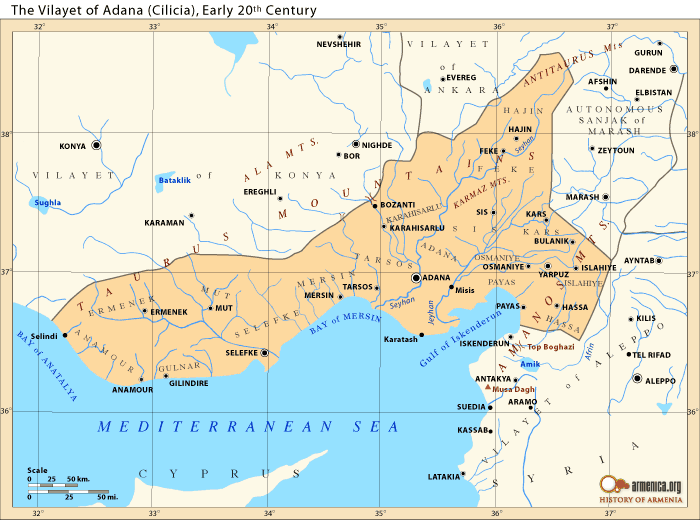
Meanwhile in Turkey, the Allies were pressuring the Ottoman Sultanate to resign and all of the former Ottoman territory would be split up, including territory within Turkey itself. Angry at the demands, a strong Nationalist movement, led by Mustafa Kemal rose up and began what is known as the “War for Turkish Independence”. Kemal gathered the remaining soldiers of the Ottoman Army and the supporters of the nationalist movement in order to attempt to unite Turkey and create a Republican Government.
.
The first target for “liberation” by the Nationalists was Cilicia. In Jan, 1920, Kemal attacked the city of Marash, severely outnumbering French forces. The French were forced to retreat, and nationalist forces massacred the Armenians who had re-settled in the city.
As the Nationalists continued to move southward, the French realized that they were out-numbered, and could not find any support among the Allies to continue the occupation. On Oct. 21st, 1921, France formally agreed with the Nationalists in the Treaty of Ankara, to withdraw from Cilicia. Again, the Armenian population needed to be evacuated. The French withdrawal was completed in January, 1922.
Ultimately the Nationalist movement created the Republic of Turkey on Oct 29, 1923, and Mustafa Kemal became its first President. In 1934, the government assembly gave Mustafa Kemal the name Atatürk (“Father of the Turks”).
Next Post I will begin covering the stamps.
I have been organizing my Cilicia stamps and sorting out some of the complications, so I thought I would post some of my leanings. There doesn't seem to be a lot written on stamps of Cilicia on the internet, so I appreciate any expertise others might have. Eventually some of this will go up on DCStamps.
First of all, a little of the tragic history.
CILICIA
At the end of World War I, the Ottomans were divisively defeated by the Allied Expeditionary Forces in Sept, 1918 in the Battle of Arara in Palestine. This led to their unconditional surrender
on Oct 30, 1918. Allied forces immediately began to occupy strategic locations across the Empire, even within the Turkish borders.
One such region was Cilicia, a large region in southeastern Turkey. Known as Adana Vilayet during Ottoman times, the region had a large Armenian Christian population until 1915 when the Ottoman Empire embarked on the systemic slaughter of Armenians, known as the Armenian Genocide. During this period, most Armenians in Cilicia were killed, driven out, or fled the country for their safety. At first, the British occupied parts of Cilicia, however on Feb 1st, 1919, they transferred control to the French. Initially France supported the creation of an Armenian state and they encouraged more than 170,000 Armenians to return to Cilicia.

Meanwhile in Turkey, the Allies were pressuring the Ottoman Sultanate to resign and all of the former Ottoman territory would be split up, including territory within Turkey itself. Angry at the demands, a strong Nationalist movement, led by Mustafa Kemal rose up and began what is known as the “War for Turkish Independence”. Kemal gathered the remaining soldiers of the Ottoman Army and the supporters of the nationalist movement in order to attempt to unite Turkey and create a Republican Government.
.
The first target for “liberation” by the Nationalists was Cilicia. In Jan, 1920, Kemal attacked the city of Marash, severely outnumbering French forces. The French were forced to retreat, and nationalist forces massacred the Armenians who had re-settled in the city.
As the Nationalists continued to move southward, the French realized that they were out-numbered, and could not find any support among the Allies to continue the occupation. On Oct. 21st, 1921, France formally agreed with the Nationalists in the Treaty of Ankara, to withdraw from Cilicia. Again, the Armenian population needed to be evacuated. The French withdrawal was completed in January, 1922.
Ultimately the Nationalist movement created the Republic of Turkey on Oct 29, 1923, and Mustafa Kemal became its first President. In 1934, the government assembly gave Mustafa Kemal the name Atatürk (“Father of the Turks”).
Next Post I will begin covering the stamps.






